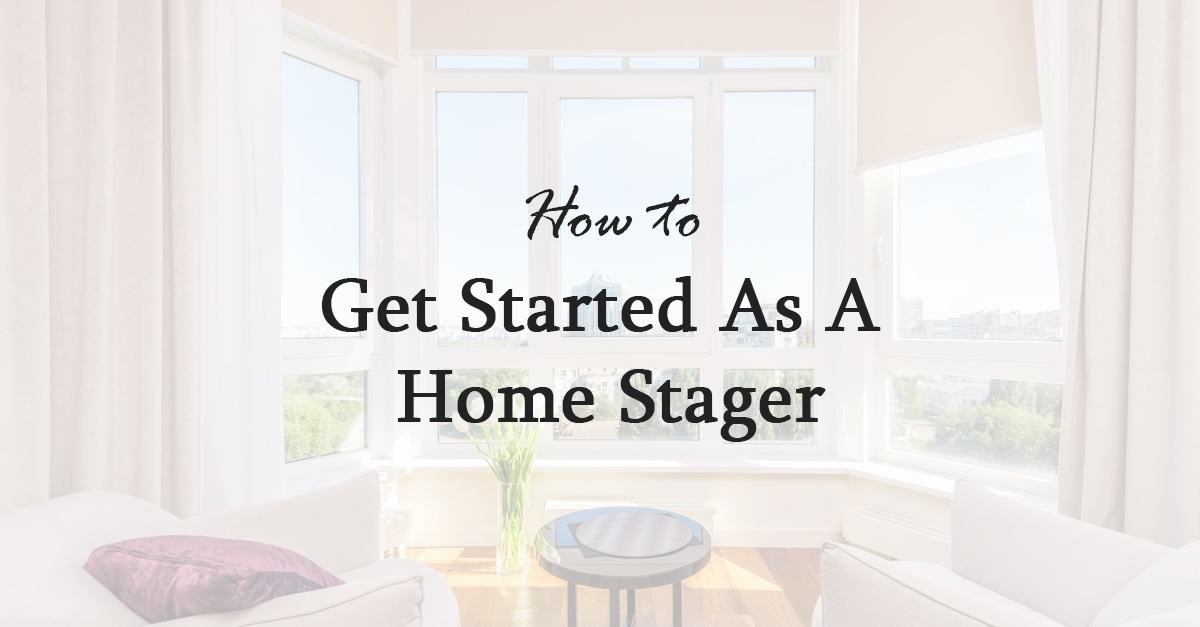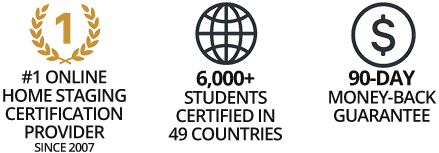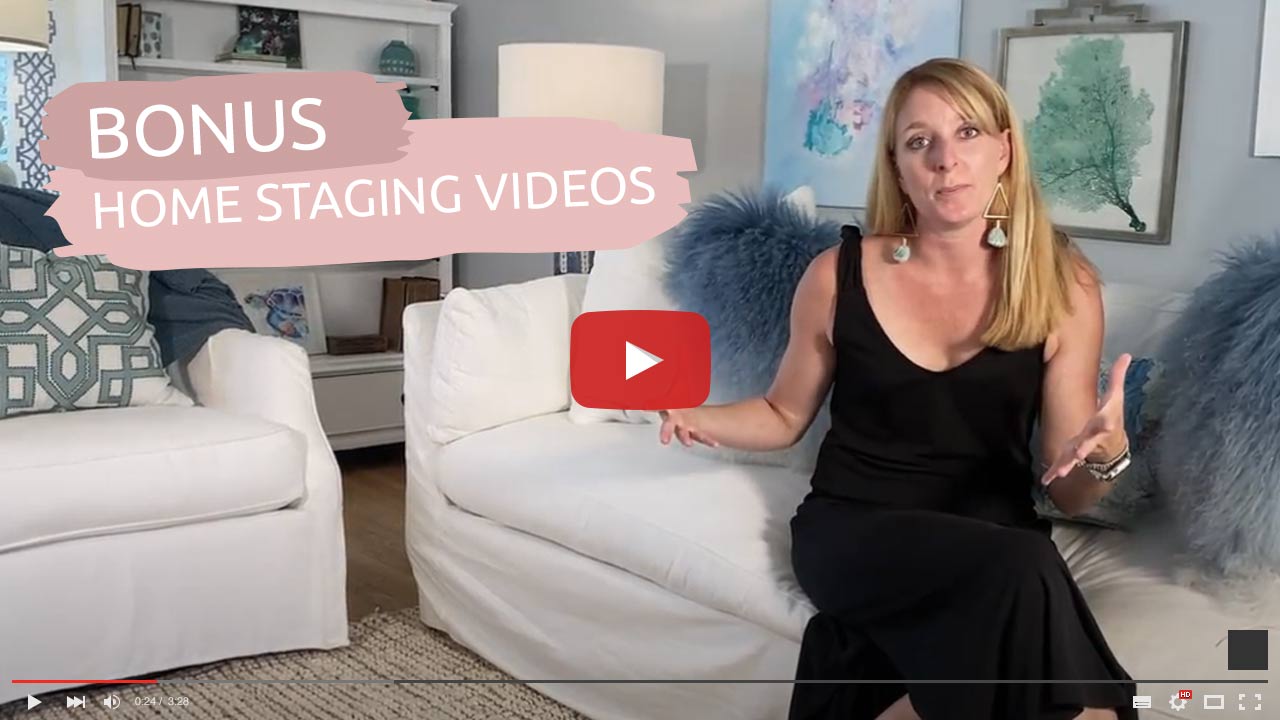Becoming a home stager not only allows you to fulfill your passion and talent for interior decorating and professional organizing, it also provides the exciting opportunity to put your skills to work for you growing a lucrative business.
However, passion and creativity alone are not enough to ensure your business is a success.
That’s where this guide comes in. At the Home Staging Institute, we’ve helped thousands of students take the leap from design hobbyists to confident, working professionals. The most successful home stagers we’ve seen didn’t just have great taste – they followed a smart plan. This article breaks down the essential steps to help you launch your home staging career with clarity and confidence. Whether you’re exploring the industry or ready to dive in, we’ll walk you through what you need to know to get started the right way.
You also need clear direction to build a thriving business, which the following tips can help provide.
Understand What Your Profession Requires
To be successful at anything, you must know the full picture. This means letting go of any preconceived notions or visions of grandeur you may have about being a home stager and actually conducting the research to learn what it really involves.
Some ways to do this include:
Research the Home Staging Market in Your Area
Before you begin, research the home staging market in your area to determine how established it is.
Naturally, the more familiar your area’s real estate market is with home staging as a tool, the more advantageous it will be for you to establish a successful career.
On the other hand, in less developed markets, home staging as an industry practice will need to be established, which will take time; therefore, keep this in mind.
You should also consult with local real estate professionals to help determine if there is a need for your service in the area. This also presents the perfect opportunity to introduce yourself, explain what it is you do, as well as how it can benefit their business to help establish demand for your service in the area if there isn’t already one.
Talk to Home Stagers in Your Area
If your area already has an active home staging scene, one of the best ways to learn about the profession is to connect directly with working stagers. Reaching out for a quick chat or some informal advice can give you a behind-the-scenes look at what the job really involves.
That said, home stagers are often juggling multiple projects and deadlines, so don’t be discouraged if they don’t have time for a coffee meeting. A better approach might be to send a friendly message through their business website or social media, letting them know you’re starting out and would love any advice they’re willing to share. Keep it short, respectful, and appreciative of their time.
You can also join Facebook groups such as the fast-growing Home Staging Jobs group (which is managed by StagingJobs.com), and other online communities where home stagers hang out. These groups are great for asking questions, seeing how others price their services, and staying in the loop with industry trends. It’s one of the fastest ways to learn from those already doing the work – and to start building your own network at the same time.
Become a Home Staging Assistant
Consider becoming a home staging assistant to experience home staging firsthand. This will allow you to work alongside a professional home stager and observe the day-to-day requirements of the job, which will enable you to determine if it is the right career for you.
For instance, many people enter the field assuming that home staging is simply rearranging furniture to make the house look more appealing and are often surprised or put off when they discover it also requires commissioning home service providers, such as landscapers and painters, as well as a knowledge of real estate and more, which working as an assistant home stager will allow you to experience.
Consider Your Expenses
Starting a business requires certain costs; therefore, it is important to consider these costs and whether you can afford them before jumping in. This will help save you a lot of time and frustration in the long run.
When calculating the costs, consider your ongoing costs, such as your operating expenses. You will also need to determine how much savings you will need to cover your bills while you build your business.
Staging homes also requires staging equipment; therefore, you will need to determine the cost of purchasing your own equipment, or you can rent it from a rental company.
At the Home Staging Institute, we see many students start out with a lean budget. A typical starter budget includes $200–$500 for marketing (think business cards, a very basic website, and Facebook ads), around $300–$700 for basic props and accessories, and maybe $50–$100 per month for insurance and admin tools like Canva or QuickBooks.
You don’t need to own a sofa or dining set to get started – many stagers start with consultations only, then reinvest earnings into furniture or rental partnerships later.
The biggest mistake? Spending too much on furniture too early before your systems and client pipeline are in place.
You will also need to set aside a budget for marketing yourself and getting your business in front of the public. There are also costs associated with establishing your business legally.
Asking yourself these questions, as well as other questions regarding your costs, will help better prepare you to start your new career off on the right foot.
Develop a Business Plan
Once you have decided to become a home stager, it is time to make it official, which a well-written business plan can help you do.
You will need to select a name for your business that sums up or describes it in detail so there is no question about what you do.
You also need to determine the legal entity your business will operate under, such as an association, corporation, partnership, or sole proprietorship, etc.
Take some time to map out your company’s objectives and policies, which should be covered in detail.
Overall, your business plan will serve as a blueprint for making decisions and help keep you moving in the right direction. It will also serve as proof to lenders and investors if you decide to take out a loan or bring in part owners.
A sound business plan will also enable you to visualize your business and provide a solid way to organize your ideas. It can also be used to analyze your strengths and what you need to work on to avoid downfalls that can lead to bigger issues later.
Earn Your Home Staging Certification
Having a natural eye for design is a great starting point – but it’s not enough on its own.
To truly stand out in the industry and earn the trust of paying clients, you need professional training. Getting certified as a home stager helps position you as an expert, giving potential clients confidence that you know what you’re doing – and that you’re worth the investment.
Just like real estate agents or interior designers, certified home stagers are seen as serious professionals.
A good certification program doesn’t just teach you design principles – it shows you how to run your business, work with clients, price your services, and deliver results that sell homes.
It’s also essential to protect yourself legally. A clear contract and liability insurance are must-haves from day one. And if you’re planning to hire contractors or assistants, it’s smart to speak with a legal professional so your business is set up the right way.
Home staging is a rewarding career where you’ll collaborate with real estate agents and help homeowners maximize their sale price. At the Home Staging Institute, we’ve seen students go from no experience to landing paid jobs in just 30 to 60 days. Certification not only builds your skills – it gives your business credibility. Clients want to work with professionals, not hobbyists, and a certificate helps you prove you’re the real deal.







